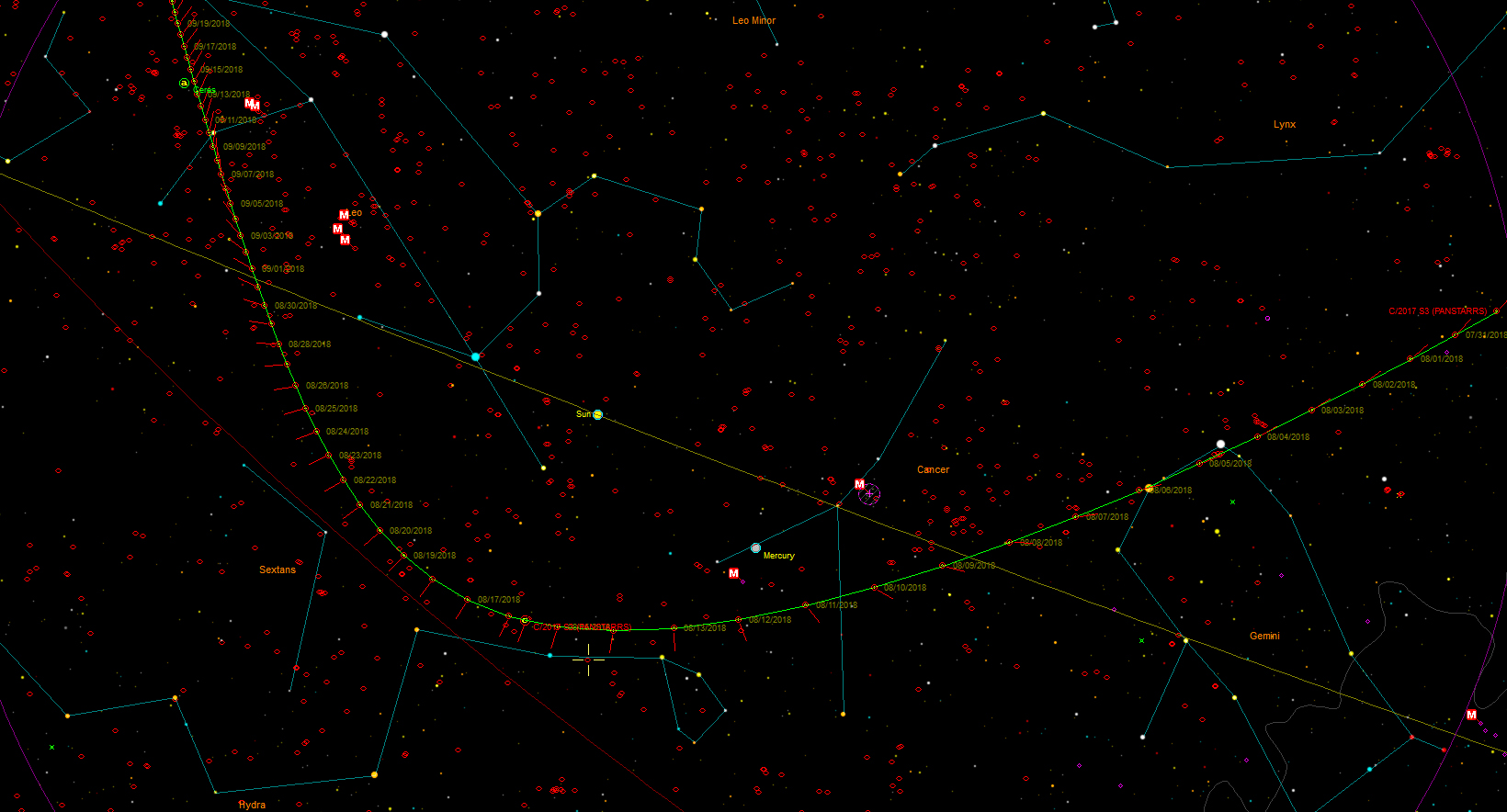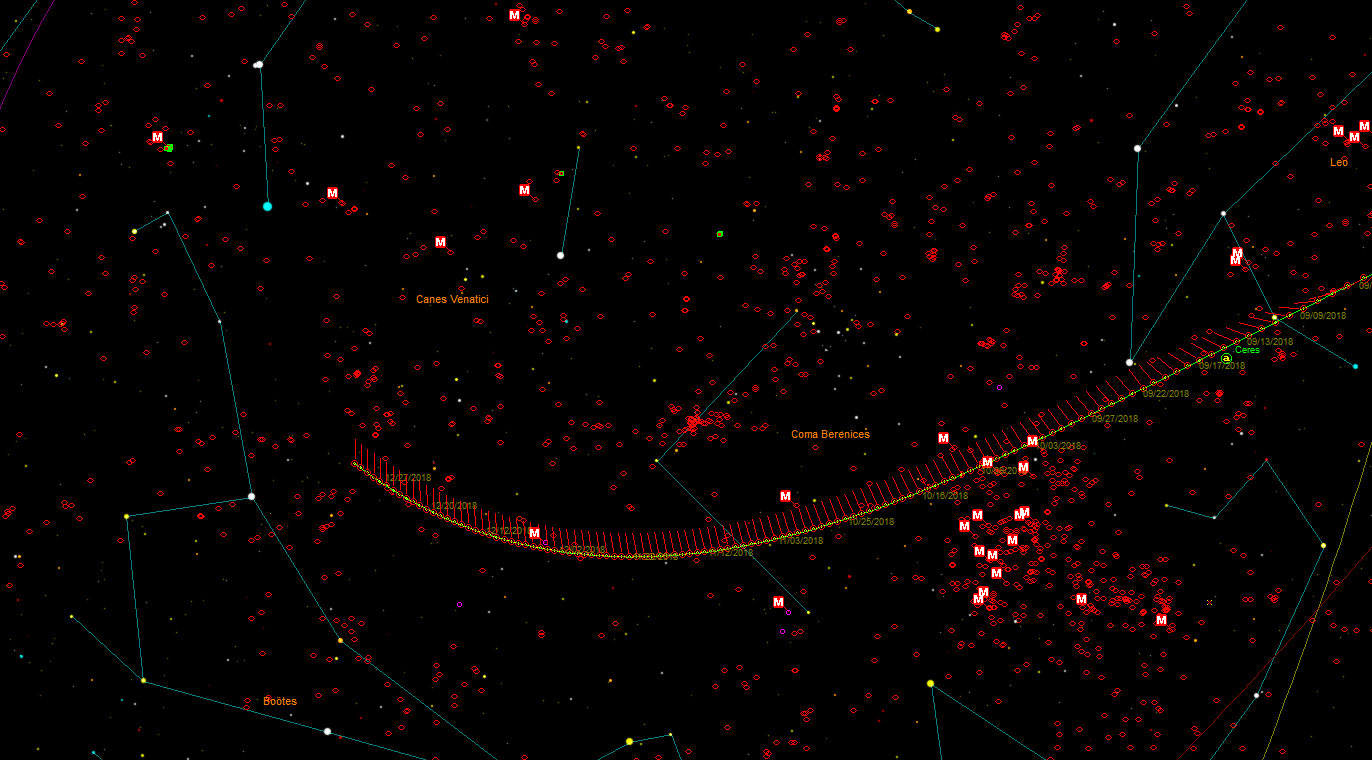Comet C/2017 S3 PANSTARRS has had an outburst and has rapidly brightened.
UPDATE – 8th August 2018. The comet has suddenly faded rapidly, so it looks like it has broken up.
The comet was reported to suddenly jump at least 2 magnitudes, extremely quickly.
It is currently around 9th magnitude and visible in the early morning sky, high up in the north east before the sky starts brightening (although, of course twilight lasts all night at this time of the year, so the skies do not really get dark).
It is actually a circumpolar object, never setting from the UK.
Click here to download a free pdf of this information.
Please feel free to pass around.
The full path of the comet for this apparition. (Click on the maps for a closer view).
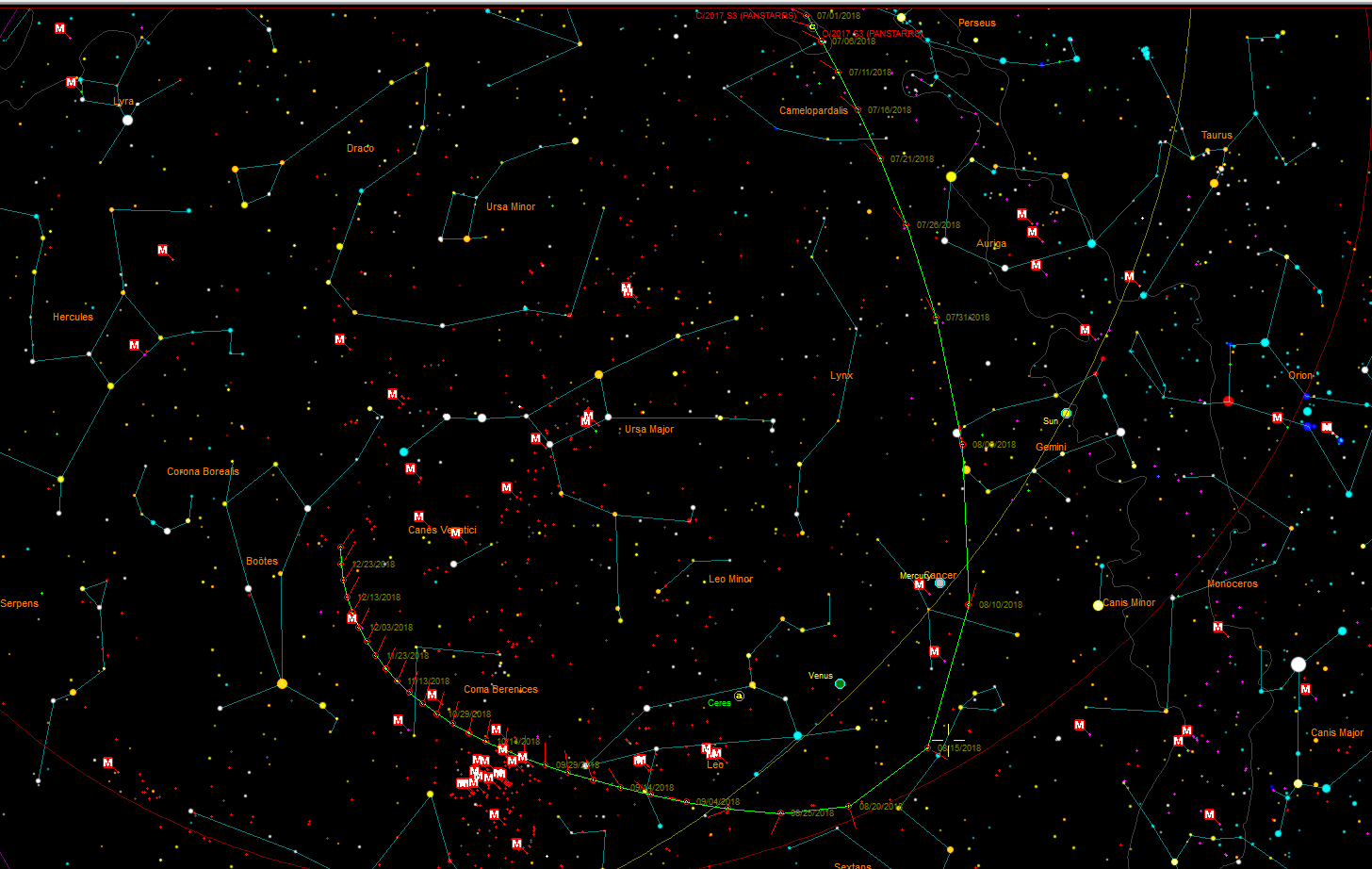
The comet is currently in the constellation of Cassiopeia, but quickly moves into Camelopardalis as it heads south, gathering pace and brightening all the time.
Towards the end of July, the comet will be just north of the top of Auriga, not far from the first magnitude star Capella.
Path of the comet during July.
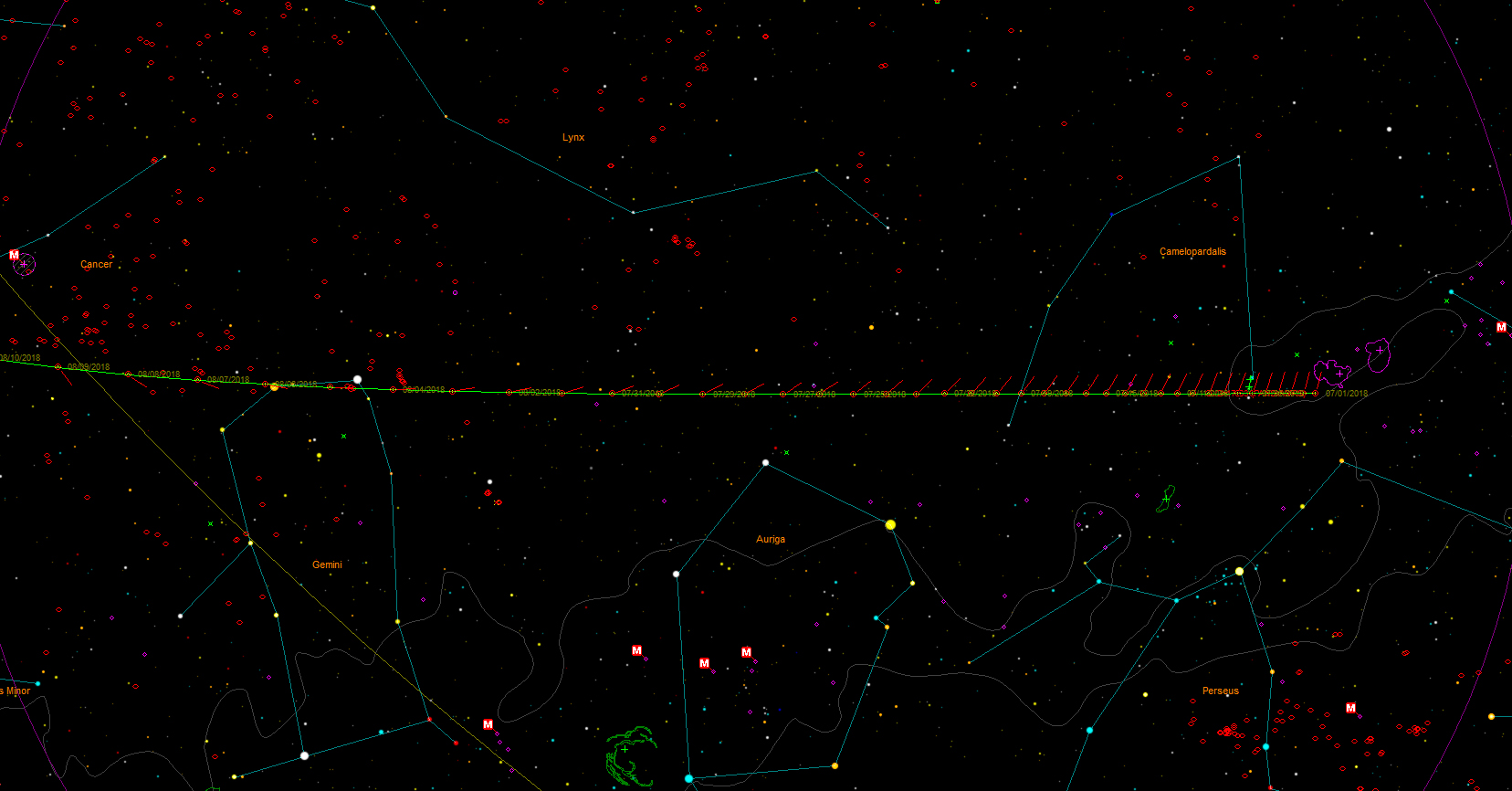
By the beginning of August, the comet will be in Gemini, passing Castor & Pollux between the 4th & 6th. By this time the comet will be very low to the horizon, just before dawn breaks in the north-eastern sky as it approaches the Sun. It COULD give a great display at this point as the comet starts getting extremely hot as it approaches the Sun. Unfortunately, the comet will rapidly slip into the Sun’s glare and be quickly lost from view.
When the comet reaches perihelion in August, despite potentially being a naked eye object, it will still be hopelessly lost in the Sun’s glare. Unfortunately, this will be the case for many weeks to come.
Path of comet during September (Not visible from the UK).
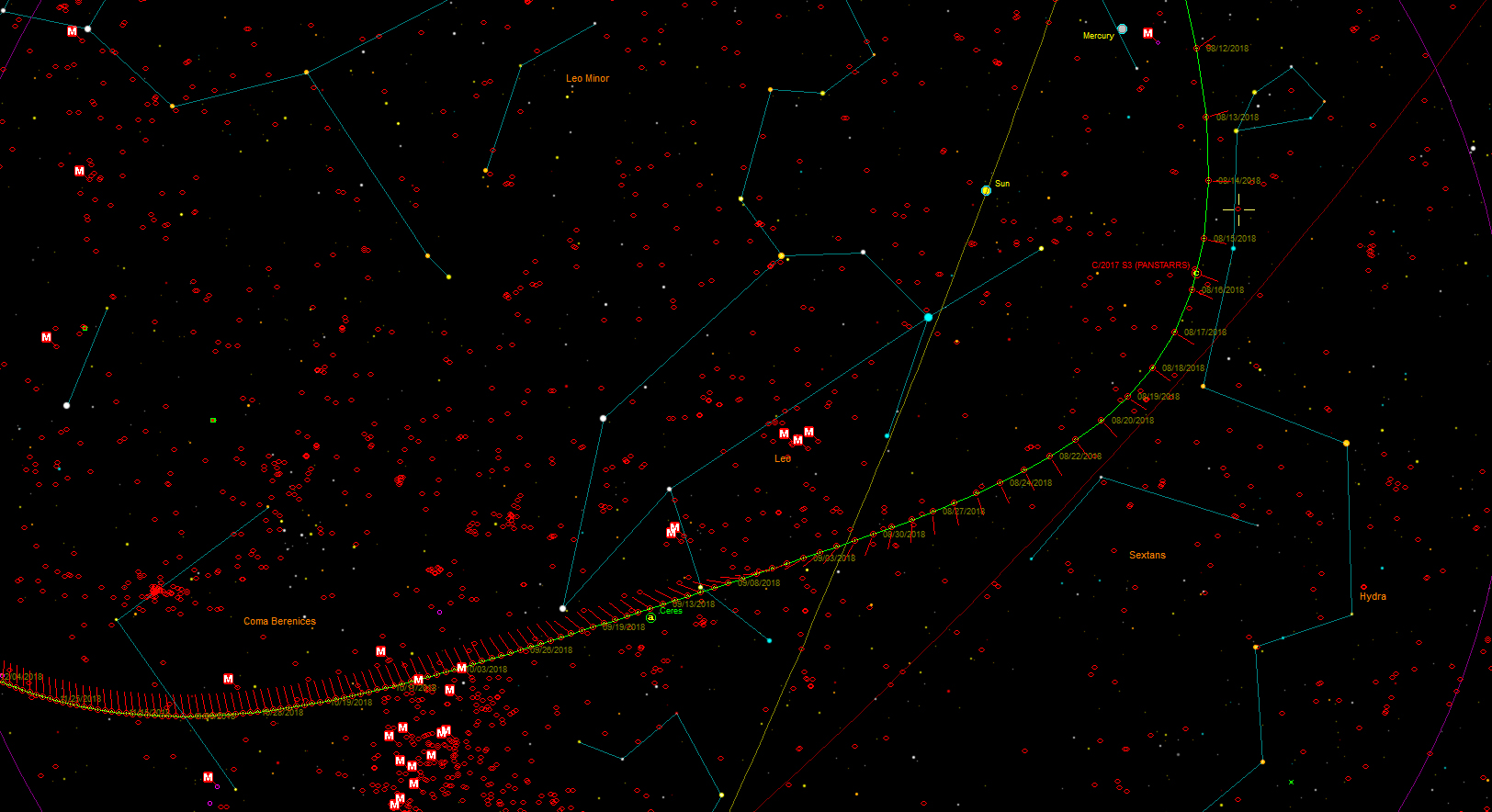
We in the UK are unlikely to spot the comet again until the beginning of October, as it starts to move away from the Sun. At this time it will once again be visible in the morning sky, low down in the eastern sky before dawn. As the comet gets higher in the darker morning skies, it approaches Coma Berenices, so will pass quite a few galaxies, including a number of Messier objects. It will, of course be fading by this point, but how bright the comet will be by then is anyone’s guess, as comets are extremely unpredictable. But isn’t that what makes these enigmatic objects so very fascinating?
Maps produced using C2A Planetarium Software.

